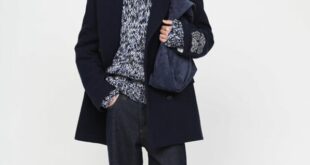Disastrous Fashion Trends of the 70s: A Lesson in Style
Throughout history, there have been numerous fashion trends that have captivated the public, only to be regarded as cringe-worthy in retrospect. From bell-bottoms to shoulder pads, these trends remind us that fashion is ever-evolving, and what was once popular can quickly become a fashion disaster. The fashion of the 70s was no exception, exhibiting experimental and atrocious styles that should remain in the past. Let’s delve into some of the most memorable fashion trends from this era that should stay firmly in the annals of history.
Arm Warmers: A Style Suicide
In the 70s, arm warmers were an utter style suicide due to their impracticality and questionable aesthetics. These accessories often clashed with outfits, appearing out of place and drawing attention for all the wrong reasons. Furthermore, their limited functionality failed to justify their presence. As modern fashion has evolved to prioritize both style and practicality, arm warmers have become obsolete and unappealing in today’s fashion landscape. Bringing them back would be a step backward, reminding us of the fashion blunders we’ve left behind.

Boob Scarfs: A Failed Fashion Experiment
Another epic fail of the 70s fashion scene was the boob scarf, a peculiar accessory designed to hold scarves near the chest, resembling breasts. Despite their quirky appeal, these scarf holders often led to awkward and uncomfortable situations. Additionally, they were widely criticized for objectifying women and lacked practicality. Consequently, they quickly faded from the fashion scene, becoming a bizarre reminder of the era’s eccentric style experiments. It is crucial to avoid perpetuating outdated and sexist ideas about women’s fashion and body objectification, making the decision to leave boob scarfs in the past an easy one.

Clear Plastic Boots: A Fashion Disaster
Clear plastic boots were a disastrous fashion choice of the 70s, lacking both style and practicality. The transparent material often fogged up, causing discomfort and embarrassment. Moreover, these boots offered no insulation, resulting in sweaty feet and blisters. Their cheap appearance clashed with outfits, failing to create a cohesive look. Bringing them back would perpetuate a fashion faux pas, reminding us of the awkward and uncomfortable trends from the past. Let’s steer clear of this mistake and explore more fashionable options.

Dresses Over Pedal Pushers: Conflicting Styles
Combining dresses with pedal pushers proved to be a complete fashion blunder in the past. The clash of two conflicting styles resulted in an unflattering and awkward look. The odd proportion created by this combination failed to complement different body shapes. Bringing back this trend would risk repeating the same fashion blunder, as it lacks cohesion and elegance. Instead, focusing on modern and well-tailored outfits can accentuate individual style without resurrecting fashion mistakes from the past.

Giant Jeans: A Fashion Faux Pas
One of the most prominent fashion faux pas of the 70s was giant jeans. These excessively oversized jeans were overwhelmingly bulky, making movement difficult and posing tripping hazards. Their unflattering fit failed to complement most body types, resulting in an unappealing silhouette. Bringing them back would be a step backward in fashion evolution, as we have learned to prioritize comfort, style, and practicality in modern clothing choices. It’s time to embrace more flattering and versatile options.

Jelly Shoes: Uncomfortable and Outdated
Jelly shoes, a fashion trend of the 70s, proved to be a total debacle due to their uncomfortable, sweaty, and blister-inducing nature. The plastic material of these shoes trapped moisture, causing discomfort and bad odor. Additionally, their lack of support often led to foot pain and potential injuries. Bringing them back would be a step backward, prioritizing style over comfort, which isn’t ideal for overall foot health and well-being. Modern footwear options offer style and comfort without the drawbacks of jelly shoes.

Platform Sneakers: A Clunky Disaster
Platform sneakers in the 70s were a dismal fashion failure due to their exaggerated height and clunky appearance. These shoes made walking difficult and often led to accidents. Today, they shouldn’t make a comeback because the fashion industry has evolved with more practical and stylish options available. Platform sneakers lack versatility, making them less appealing in modern fashion trends. It’s time to embrace shoes that provide comfort and elegance without compromising on style.

Rubber and Latex Jumpsuits: A Restrictive Choice
Rubber and latex jumpsuits were a fashion mishap of epic proportions in the 70s. Their uncomfortable and restrictive nature often caused excessive sweating, skin irritation, and difficulty in movement. These materials lacked breathability, leading to discomfort and potential health issues. Additionally, they offered limited versatility, making them impractical for everyday wear. Bringing them back would reintroduce these discomforts and fashion mistakes from the past, an undesirable outcome. Let’s leave rubber and latex jumpsuits where they belong – in the past.

Shoulder Pads: Exaggerated Silhouettes
Shoulder pads in the 70s were a complete fashion catastrophe, creating an exaggerated and boxy silhouette that made people look disproportionate. They were uncomfortable and restricted movement, making daily tasks challenging. Bringing them back would be unwise, as modern fashion trends emphasize comfort and natural body shapes. Instead, we should focus on contemporary styles that promote confidence, comfort, and individuality without revisiting the impracticality of shoulder pads.

Snake Skin Prints: Unethical and Outdated
Snake skin prints, despite their adventurous appeal, stemmed from unethical origins and were associated with animal cruelty. Wearing snake skin print promotes the use of real animal skins, perpetuating harm to wildlife populations. Furthermore, these prints are often perceived as tacky and outdated, lacking sophistication in modern fashion trends. Embracing cruelty-free and sustainable alternatives showcases compassion for animals and aligns with ethical and eco-conscious values. Let’s resist the allure of snake skin prints and opt for more responsible fashion choices.
These were just a few examples of disastrous fashion trends from the 70s that should not make a comeback, as they may promote harmful stereotypes, lack practicality, or simply be uncomfortable. Furthermore, some trends may not align with current social values or might have been overdone in the past, making their return less desirable. It’s essential for the fashion industry to evolve and embrace new styles that better reflect our changing perspectives and needs. By leaving these fashion mistakes in the past, we can pave the way for a more stylish and inclusive future.
 Mind Uncharted Explore. Discover. Learn.
Mind Uncharted Explore. Discover. Learn.



